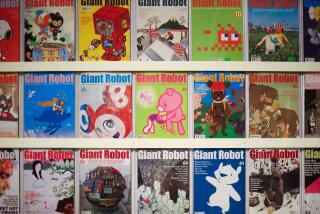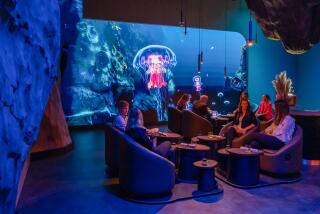In Japan, an open-air architecture museum that honors Western-inspired architecture
- Share via
Reporting from Inuyama, Japan — Japan may have more theme parks per capita than any other country. Besides Disneyland, Legoland and Universal Studios, there are smaller parks featuring a miniature Spain, a miniature Holland and celebrations of Pokémon and Thomas the Tank Engine.
Then there’s Meiji-mura in central Japan northeast of Nagoya. The open-air museum pays homage to Western-inspired architecture that appeared in Japan as it opened its borders to foreign trade after 200 years of isolation.
The 250-acre museum, open since 1965, is home to more than 60 structures from the Meiji era (1868-1912), including schools, police stations, bus terminals, administrative buildings, churches, private residences and even a regional prison.
These aren’t reproductions or replicas like those found in Japanese parks devoted to samurai and ninjas. They are actual buildings, each procured, dismantled, moved and painstakingly rebuilt on site.
The prize of the park, for some visitors, is the original lobby and first floor of architect Frank Lloyd Wright’s Imperial Hotel, opened in June 1923.
It’s one of the few major structures to have withstood the 7.9-magnitude Great Kanto earthquake three months later, and later still, the World War II firebombing of Tokyo. Wright’s masterwork was demolished in 1968, and the park’s owners shipped the remnants of the lobby and reflecting pool to their then-new theme park.
I spent five happy hours last summer traipsing around the park’s wide boulevards and narrow hillside trails, wondering at the Japanese workers’ houses relocated from Hawaii and Brazil and the Japanese houses of Christian workshop brought from Seattle and Kyoto, Japan.
Also lovingly re-created are a lighthouse, several bridges and homes once occupied by writers Lafcadio Hearn (“Kwaidan”) and Natsume Soseki (“I Am a Cat”). There are also factories that once produced beer and sake.
My favorite might have been the bathhouse, the butcher’s shop or the barber shop — all with period-correct equipment and implements — or the Foreigner’s House, its interior accurate down to the last 1887 detail.
If you go
Museum Meiji-mura is best reached by car or bus; it’s about an hour’s drive from Nagoya or about four hours from Tokyo. Train and bus service runs regularly from Nagoya and costs about $20 round trip.
Museum Meiji-mura, 1 Uchiyama, Inuyama, Japan;meijimura.com/english is open 9:30 a.m. to 5 p.m. or 10 a.m. to 4 p.m daily, depending on the season. Closed on national holidays and Sept. 3-7 and Jan.7-11. Tickets cost about $15.50 for adults, with discounts for students and seniors.
More to Read
Sign up for The Wild
We’ll help you find the best places to hike, bike and run, as well as the perfect silent spots for meditation and yoga.
You may occasionally receive promotional content from the Los Angeles Times.







